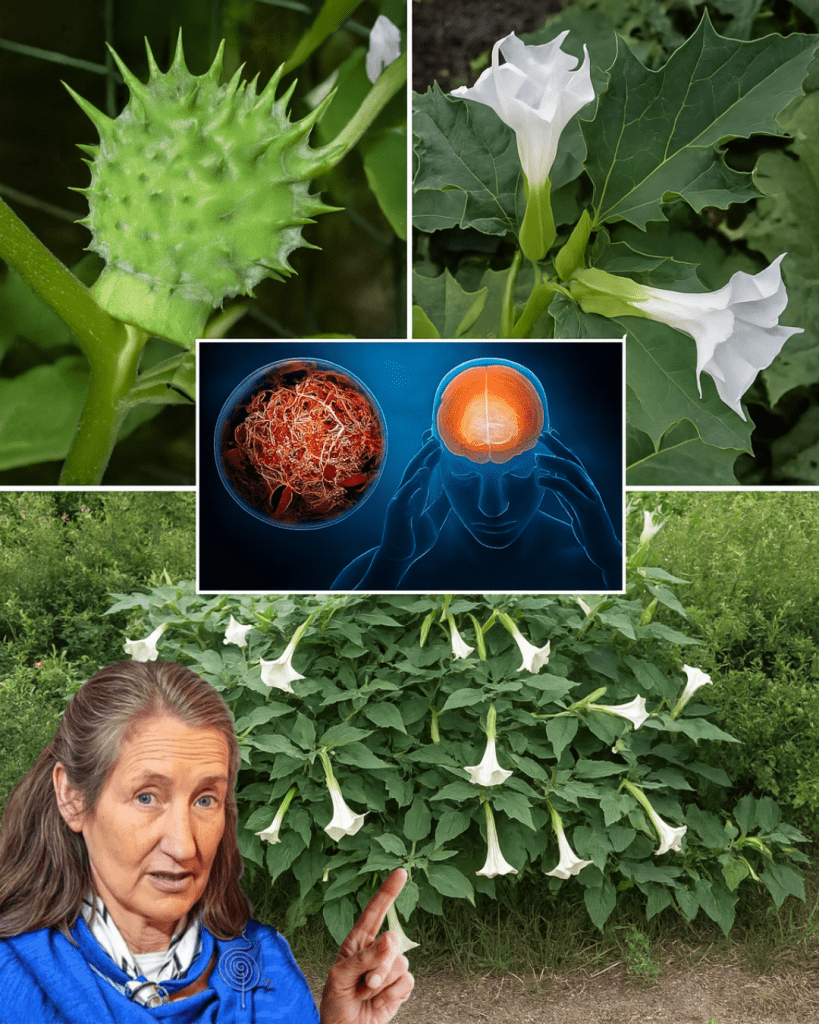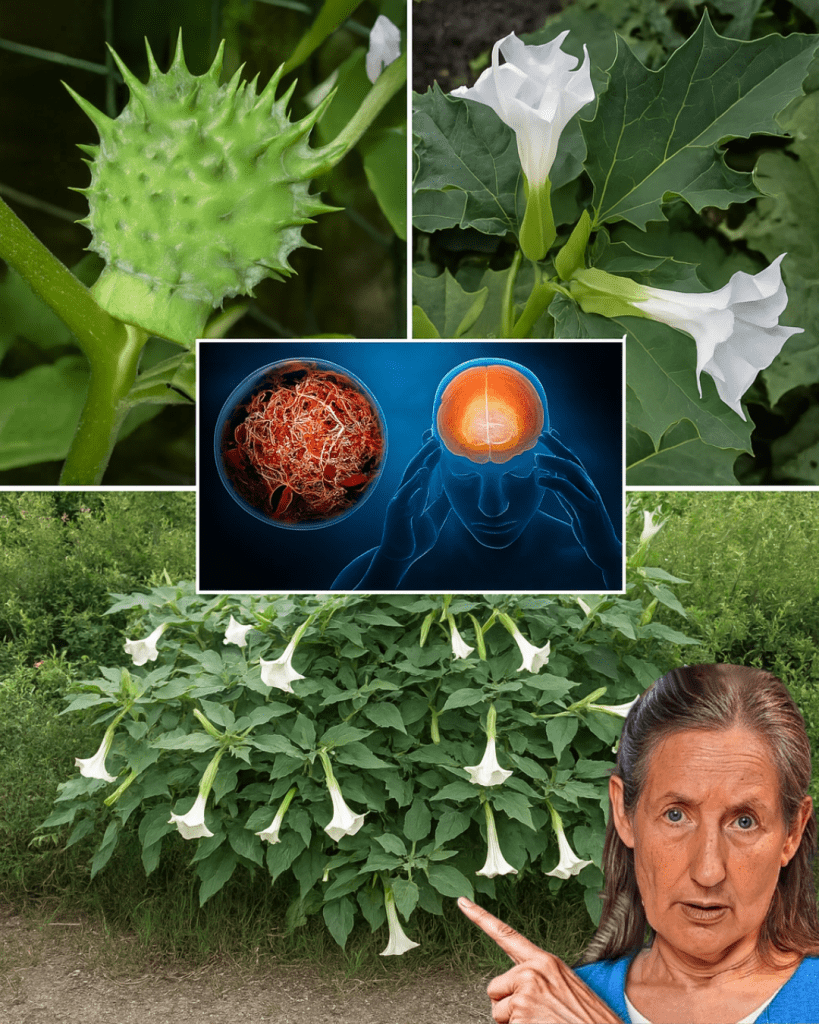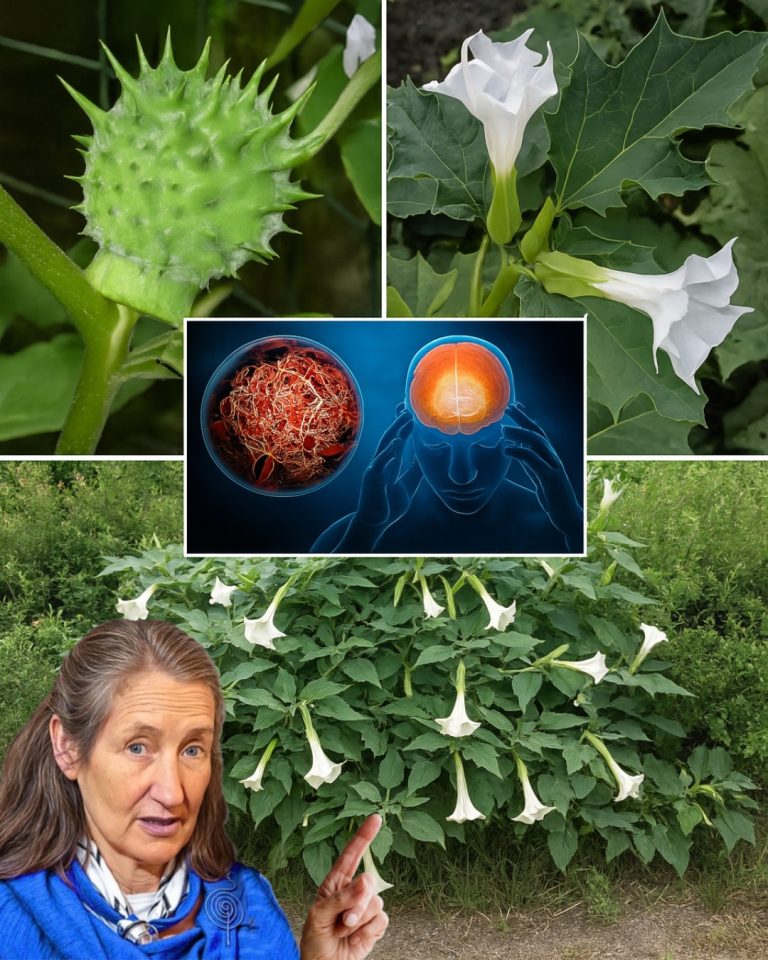Have you ever paused to admire a plant with stunning trumpet-shaped flowers in your yard, only to wonder about its true nature? Datura, often known as devil’s trumpet or jimsonweed, is a breathtaking yet dangerous plant that can catch you off guard. Its alluring blooms hide a toxic secret that could harm you, your family, or your pets. Curious about this deceptive beauty? Let’s uncover what makes Datura so risky, how to spot it, and the steps you can take to stay safe. 🌸

What Is Datura? A Closer Look
Datura, a member of the nightshade family (Solanaceae), is a striking plant native to Central America but now thrives across the U.S. and other temperate regions. Known by names like thornapple or devil’s trumpet, it often pops up in unexpected places—roadsides, fields, or even your backyard. Its large, fragrant flowers and spiky seed pods make it stand out, but its beauty comes with a catch.
The plant contains tropane alkaloids—compounds like atropine, scopolamine, and hyoscyamine—that are highly toxic. These chemicals can disrupt your nervous system, leading to serious health risks. Whether growing wild or cultivated for its ornamental appeal, Datura demands caution. Recognizing its features is the first step to staying safe.
How to Identify Datura in Your Yard
Spotting Datura before it becomes a problem is crucial. Here are the key characteristics to look for:
- Flowers: Large, trumpet-shaped blooms, 2–4 inches long, in white, purple, or yellow. They often open at night, releasing a sweet, honeysuckle-like fragrance.
- Seed Pods: Round, spiky capsules (called thornapples) that split open when ripe, revealing small, dark seeds.
- Leaves: Broad, lobed, and slightly fuzzy, with a grayish-green color.
- Height: Grows 1–4 feet tall, with a sprawling, shrub-like structure.
- Scent: Flowers are fragrant, but crushed leaves may have an unpleasant odor.
Datura thrives in disturbed soils, such as near roads, in pastures, or in neglected gardens. If you see a plant matching this description, keep your distance and ensure children and pets do the same. Sharing this knowledge with neighbors can help protect your community.
Why Is Datura So Dangerous?
Datura’s beauty masks a serious threat. Its tropane alkaloids can cause anticholinergic syndrome, a potentially life-threatening condition. Even small amounts of the plant—especially its seeds or flowers—can trigger severe symptoms. Here’s what you might experience if exposed:
- Hallucinations and Delirium: Vivid, often terrifying hallucinations and confusion can last up to 48 hours or more.
- Dilated Pupils and Blurred Vision: Eyes become sensitive to light, with impaired vision that may persist for days.
- Dry Mouth and Thirst: A hallmark of poisoning, making swallowing difficult and uncomfortable.
- Rapid Heart Rate: Elevated heart rate and blood pressure can stress the cardiovascular system.
- Seizures or Coma: In severe cases, poisoning can lead to seizures, respiratory failure, or even coma.
The unpredictable alkaloid content makes Datura especially risky, as toxicity varies by plant, season, and even individual parts. Children and teens are particularly vulnerable, with accidental ingestions leading to hospitalizations. Pets, like dogs and cats, are also at risk if they chew on the plant.
The Risks of Mishandling Datura
You don’t need to eat Datura to feel its effects—skin contact alone can cause problems. The plant’s sap may irritate skin or eyes, sometimes leading to mydriasis (dilated pupils). Inhaling smoke from burning Datura can also be harmful, causing respiratory distress or systemic symptoms. The plant’s allure has led to misuse, particularly among teens seeking its hallucinogenic effects, often with dangerous consequences.
How to Stay Safe Around Datura
If Datura is growing in your yard, taking precautions is essential to protect yourself and others. Follow these practical steps to minimize risks:
- Avoid Ingestion: Never consume any part of the plant—seeds, leaves, or flowers—as even tiny amounts are toxic.
- Use Protective Gear: Wear gloves and long sleeves when handling Datura to prevent skin irritation or accidental exposure.
- Supervise Kids and Pets: Teach children not to touch or eat unknown plants, and keep pets away from Datura.
- Remove Safely: Dig up the entire plant, including roots, and dispose of it in a sealed bag. Avoid burning it, as the smoke is toxic.
- Wash Immediately: If you touch Datura, wash your hands and exposed skin with soap and water right away.
Emergency Action: If you suspect Datura poisoning, call poison control at 1-800-222-1222 or seek medical help immediately. Symptoms can appear within 30–60 minutes and require urgent care. ✅
Datura’s Historical and Modern Uses
Despite its dangers, Datura has a complex history. In traditional practices, such as Ayurveda, small, controlled doses were used for ailments like asthma or pain. However, its high toxicity led to bans in some regions, including parts of India. In the U.S., Datura is not approved for medicinal use due to its severe side effects.
The plant’s hallucinogenic properties have also made it a target for misuse, particularly among those unaware of its risks. Recent cases, including accidental poisonings in children, underscore the need for public awareness. While Datura may attract nocturnal pollinators like moths, its dangers outweigh its benefits for most gardeners.

